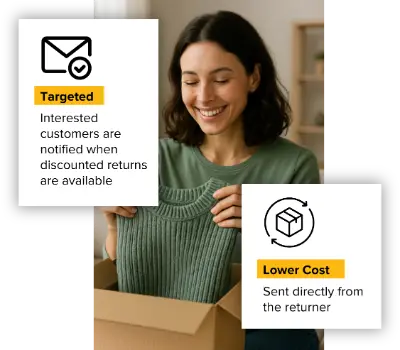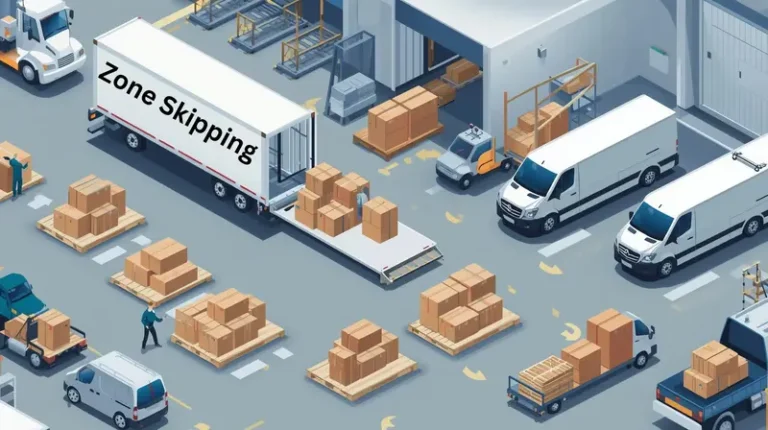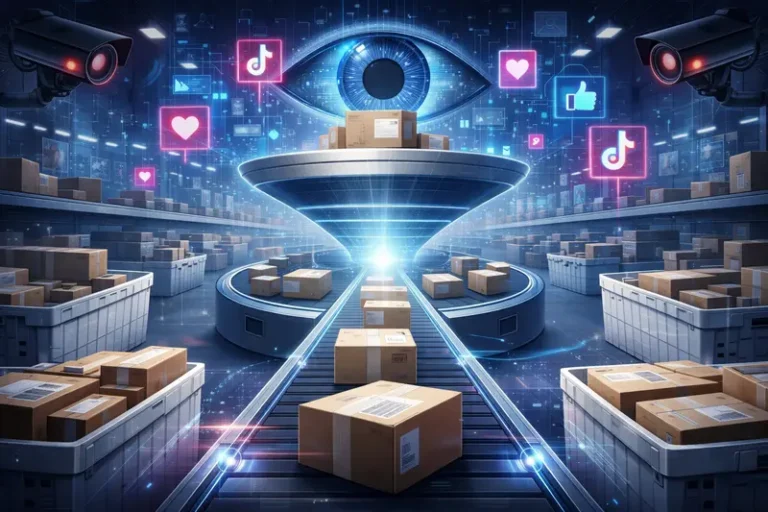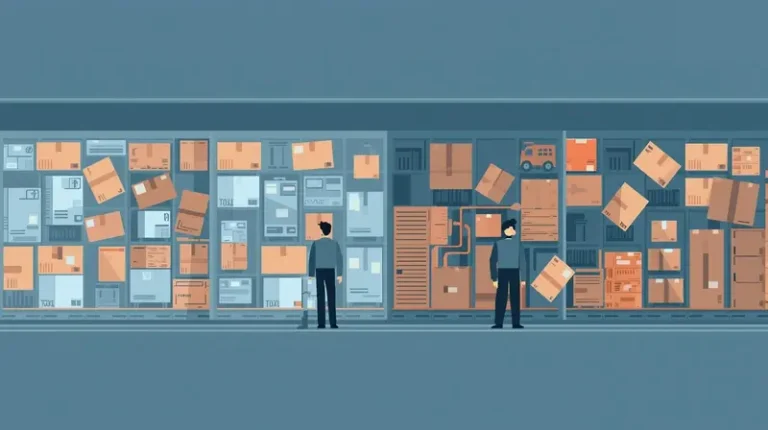Last-Mile Delivery: Parcel Lockers Versus Home Delivery Cost Reality

Last updated on August 29, 2025
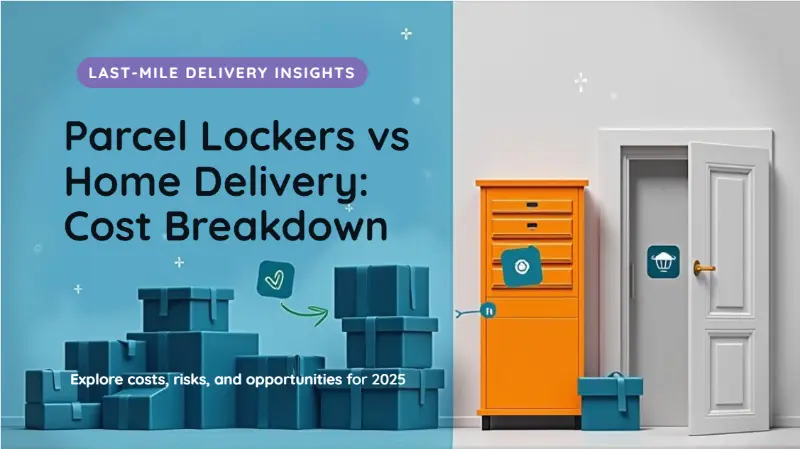
In this article
 10 minutes
10 minutes
- Introduction to Last-Mile Deliveries
- The Delivery Process
- Last-Mile Logistics and Fulfillment Centers
- Why Lockers Change The Last-Mile Delivery Challenges Route Math
- What The Data Says So Far
- The Hidden Costs You Still Need To Count
- A Simple Cost Framework You Can Use
- Role of Technology in the Last-Mile
- Where Lockers Win
- Where Home Delivery Still Makes Sense
- The US Adoption Curve In 2025
- How I Would Pilot This In Ninety Days
- Customer Messaging That Works
- The Bottom Line
- Frequently Asked Questions
The last mile is where good margin goes to die, as it’s notorious for its high costs. The growth of online shopping has dramatically increased demand for efficient last-mile delivery and raised customer expectations. Today, customers expect real-time tracking, fast delivery, and transparency throughout the last-mile delivery process. The last-mile, also known as the final mile, is the last segment of the delivery process from a local hub to the customer’s doorstep. Consumers increasingly demand fast delivery options, often expecting them to be free, which adds further pressure to optimize this stage. This surge has brought last-mile delivery challenges and the last-mile delivery problem to the forefront, highlighting the complexity and expense of this stage.
The last-mile delivery problem refers to the high cost and inefficiency associated with the final stage of delivery, making it the most expensive and time-consuming part of the shipping process. One van, scattered addresses, traffic, missed deliveries, theft. Parcel lockers promise a different math. Fewer stops, denser drops, better first attempt success. The question is not whether lockers are cool. It is whether lockers beat home delivery on cost and customer experience for your network, especially considering last-mile shipping as the most expensive and complex part of the delivery process, and the importance of managing the entire shipping process, particularly the last-mile, to meet customer expectations and control costs.
Slash Your Fulfillment Costs by Up to 30%
Cut shipping expenses by 30% and boost profit with Cahoot's AI-optimized fulfillment services and modern tech —no overheads and no humans required!
I'm Interested in Saving Time and MoneyIntroduction to Last-Mile Deliveries
Last-mile deliveries represent the crucial final step in the delivery process, where packages make their journey from a transportation hub or distribution center to the customer’s final destination, often their home or office. This phase of the mile delivery process is where customer satisfaction is truly won or lost, as it’s the most visible part of the supply chain for end recipients. With the explosion of online shopping and the growing demand for same-day delivery, the pressure on businesses to perfect their last-mile delivery process has never been higher. The last mile is often the most complex and expensive segment, requiring careful coordination to meet tight delivery windows and high customer expectations. As companies strive to deliver faster and more reliably, optimizing the last-mile has become a top priority for anyone looking to stay competitive in the world of day delivery and ecommerce.
The Delivery Process
The delivery process for last-mile deliveries involves a series of coordinated steps designed to get packages from the distribution center to the customer’s door as efficiently as possible. It typically starts when a parcel arrives at a local transportation hub or distribution center, where it is sorted and assigned to a delivery driver. The driver then follows a carefully planned delivery route, aiming to reach each final destination in a timely manner. The last-mile delivery process is often complicated by factors such as traffic congestion in urban areas and long distances between stops in rural areas. To tackle these challenges, delivery companies are increasingly relying on advanced route planning and real-time driver tracking to optimize delivery routes, minimize delays, and ensure successful final delivery. These tools help delivery drivers navigate the complexities of the final mile delivery process, improving both efficiency and customer satisfaction.
Last-Mile Logistics and Fulfillment Centers
Last-mile logistics relies heavily on the strategic placement and operation of fulfillment centers. These centers act as the backbone of the delivery process, serving as hubs where packages are stored, sorted, and dispatched for final delivery. The proximity of fulfillment centers to customers is a key factor in reducing delivery times and costs, making it possible to offer rapid order fulfillment and next-day delivery options. By investing in fulfillment centers closer to high-density customer areas, businesses can streamline their final mile logistics, cut down on transportation expenses, and boost customer satisfaction. Additionally, the integration of automated sorting systems and real-time inventory management within these centers enhances the overall logistics process, ensuring a smoother, more reliable customer experience from order to doorstep.
Why Lockers Change The Last-Mile Delivery Challenges Route Math
Home delivery pushes a driver to dozens of unique addresses. Each stop consumes time, parking, and handling, and in congested urban areas, navigating traffic can take just as much time as covering longer rural routes. By leveraging route planning and optimizing delivery routes, especially when considering vehicle capacity, companies can significantly improve efficiency and reduce operational costs. Optimizing route distance is crucial, as it helps reduce costs and improve efficiency by ensuring drivers take the most effective paths. Lockers flip the density. A driver injects hundreds of parcels into a handful of locker banks, then customers pull on their schedule. Having a well-managed fleet of delivery vehicles is essential for efficient locker deliveries, ensuring packages are handled and tracked properly throughout the process. Studies suggest that replacing a slice of doorstep deliveries with out-of-home options can trim delivery costs and emissions by enabling more efficient routes for drivers. Fewer miles, fewer door knocks, fewer second attempts.
What The Data Says So Far
Analyses from the postal and parcel industry show that centralized delivery points cost less than door service on a per point basis. European operators with mature locker networks report strong unit economics as scale increases. Environmental data from operators shows lower emissions per package when customers collect from lockers instead of waiting at home. Parcels placed in lockers or hubs typically await delivery, either for customer pickup or for the final leg to the recipient, highlighting the efficiency of this model. Add in the US reality of porch theft, and the risk-adjusted math leans even harder toward out-of-home in many neighborhoods.
The Hidden Costs You Still Need To Count
Lockers are not free. Someone pays for land rights, electricity, maintenance, and software. In addition, some networks may require additional warehouse space to support rapid delivery and efficient locker replenishment, especially when implementing micro warehousing strategies. If your network is sparse, you force long customer trips, which hurts adoption. If your mix is heavy or oversized, lockers are a poor fit (pun intended). If you serve rural areas, a locker node may be miles away. The economic win depends on route density, locker utilization, and customer behavior in your footprint. Optimizing your locker network can help control costs in last-mile delivery by improving efficiency and reducing unnecessary expenses.
Looking for a New 3PL? Start with this Free RFP Template
Cut weeks off your selection process. Avoid pitfalls. Get the only 3PL RFP checklist built for ecommerce brands, absolutely free.
Get My Free 3PL RFPA Simple Cost Framework You Can Use
Start with your current last-mile cost per stop and stops per hour. Understanding the last-mile delivery process is essential for accurate cost modeling, as it involves key steps that impact efficiency, customer satisfaction, and overall expenses. Model a locker route where a driver hits five banks and injects, say, eighty parcels per bank. Back out the time you save from no second attempts and fewer address problems. Add a share of locker operating cost per parcel. Utilizing a comprehensive mile delivery solution, technology platforms that offer route planning, dispatching, real-time tracking, communication, and analytics can further streamline last-mile delivery and reduce expenses. Then overlay risk: porch theft claims, fraud, and carrier re-deliveries fall when lockers are used. Even a small drop in loss rate can tilt the equation.
Role of Technology in the Last-Mile
Technology is rapidly transforming the landscape of last-mile deliveries, offering innovative solutions to some of the most persistent last-mile delivery challenges. From drone delivery and robotic delivery to the deployment of autonomous vehicles, new technologies are helping delivery services reduce costs, speed up the final mile delivery process, and meet rising customer expectations. Digital platforms and mobile apps now provide real-time tracking, allowing customers to follow their packages every step of the way and receive timely updates. Behind the scenes, artificial intelligence and machine learning are optimizing route planning, predicting delivery volumes, and identifying potential bottlenecks before they become problems. As the postal and parcel industry continues to evolve, these technological advancements are enabling logistics providers to deliver a superior customer experience, streamline operations, and stay ahead in the competitive world of last-mile delivery services.
Where Lockers Win
- Dense urban and suburban clusters with high parcel volume, where lockers enhance last-mile services by improving delivery efficiency and customer convenience, especially when delivering parcels quickly and securely.
- Buildings or campuses where deliveries pile up and space is tight.
- High theft zones where customers value secure pickup.
- Merchants with flexible customers who prefer 24/7 pickup to missed deliveries.
Where Home Delivery Still Makes Sense
- Rural routes with low locker density.
- Heavy or oversized items that exceed locker dimensions.
- Customers who need doorstep delivery for accessibility reasons, where delivery personnel-based assignment ensures packages are brought directly to the door.
- Retail promises that bundle installation or a signature.
The US Adoption Curve In 2025
Europe sprinted ahead with national locker networks. The US is catching up. Delivery companies, along with private carriers, large retailers, and universities, are scaling out of home options and reporting better experiences in high-volume sites. Many businesses are also leveraging third-party logistics providers to efficiently expand locker and out-of-home delivery options, helping them optimize delivery processes and meet consumer expectations. Even without nationwide parity, a hybrid model is workable right now. Offer lockers where you have coverage, keep home delivery where you do not, and let customers choose based on convenience.
How I Would Pilot This In Ninety Days
- Pick two metro zips with high parcel density and porch theft issues.
- Route five to ten percent of eligible orders to lockers by default, with an opt-out.
- Measure first attempt success, total route time, loss claims, customer satisfaction, and the ability to track packages.
- Open one more cluster each month if the unit economics hold.
Scale Faster with the World’s First Peer-to-Peer Fulfillment Network
Tap into a nationwide network of high-performance partner warehouses — expand capacity, cut shipping costs, and reach customers 1–2 days faster.
Explore Fulfillment NetworkCustomer Messaging That Works
Effective customer communication is essential for setting and managing customer expectations for locker pickup. Tell the truth. Lockers reduce missed deliveries and package theft. Pickup windows are flexible. If you can add two bonus points, adoption jumps: real-time codes that are easy to find in email and SMS, and clean directions in the locker notification. Incorporating a real-time feedback loop allows customers to provide immediate feedback and receive updates during the locker pickup process, further enhancing the experience. Customers forgive one extra errand if the experience is fast and safe.
The Bottom Line
Parcel lockers are not a silver bullet, but as one of the last-mile innovations, they are a real lever for improving cost and efficiency. If your routes are dense and your theft claims are painful, lockers can shave cost per parcel and smooth operations. Keep home delivery where it belongs, add lockers where they make sense, and your last-mile gets cheaper and calmer at the same time. By utilizing your own fleet for deliveries, you gain greater control and flexibility over your logistics, including the ability to extend delivery hours. Implementing in-house delivery services allows you to directly manage your delivery operations, reduce costs, and enhance customer satisfaction. These last-mile innovations play a crucial role in optimizing supply chain management and improving overall order fulfillment.
Frequently Asked Questions
Do Delivery Lockers Always Cost Less Than Home Delivery?
Not always. The win depends on route density, utilization, and the share of second attempts and theft in your area. Model both and compare.
What Share Of Orders Should I Route To Delivery Lockers?
Start small, around ten percent of eligible orders in dense zips, then scale based on adoption and unit economics.
Do Delivery Lockers Improve Customer Satisfaction?
Usually, yes, in theft-prone or apartment-heavy areas. Clear notifications and easy codes matter. If the locker is far away, satisfaction drops.
Can Delivery Lockers Reduce Emissions?
Yes, in many scenarios. Consolidated drops cut miles and idling time, and some operators publish lower emissions per parcel for locker pickup compared to home delivery.
What About Delivery Locker Accessibility And Oversized Parcels?
Keep home delivery available for accessibility needs and large items. Lockers are a complement, not a replacement.
Turn Returns Into New Revenue
